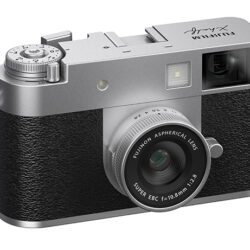A solidly-built, shockproof and waterproof slimline digicam that can record HD video clips with monaural sound.The Lumix DMC-FT1 represents a new concept for Panasonic: a tough, slimline digicam that is shockproof to 1.5 metres, waterproof to a depth of three metres and dustproof to the IP58 standard. Olympus has already been down this ‘tough camera’ track but Panasonic is the first manufacturer to add the ability to record high-definition movie clips in the new AVCHD Lite format with a frame rate of 30 frames/second.



















